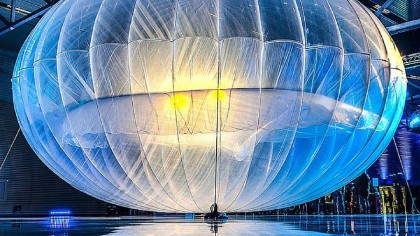The orbital internet: Could fleets of CubeSats bring global web access?
For the majority of the world, regular net access is still a pipe dream
What about Outernet?
New York-based charity Outernet is aiming for free, unrestricted and uncensored web access for the entire globe from a constellation of low-flying cubesats talking to its Lighthouse gadgets, a portable, solar-powered Wi-Fi receiver, on the Earth's surface. It promises free internet from space, forever, but will be limited to 10 megabytes per person, per day.
For now it's also only one-way, so is more about downloading Wikipedia, eBooks and Teachers Without Borders resources to schools in remote places (Outernet describes itself as 'humanity's public library'), and not about communications. For now Outernet rents space on existing telecoms satellites, but wants to launch 150 smallsats.
What about Facebook's Aquila drones?
Facebook and Google also want a slice of The Next Billion (or four) to get online, but both think even low-flying satellites go too far. Facebook's Connectivity Lab wants to fly solar battery-powered Wi-Fi drones called Aquila at 65,000 feet – above regulated airspace and in a layer of the atmosphere that is largely free from strong winds and bad weather – to broadcast a powerful signal to towns and cities below for several months at a time.

What about Google's Project Loon?
Google's Project Loon – which is now being tested – will see Wi-Fi balloons between 10km and 60km up use software algorithms to determine where its balloons need to go to fill gaps in global web connectivity, moving between layers of wind in the stratosphere to create a huge, mobile Wi-Fi network.
It's been suggested they would work well after earthquakes, tsunamis and flooding, providing instant extra capacity that doesn't rely on damaged infrastructure. "Loon is interesting because it's based on large numbers of inexpensive devices providing a wide area of coverage, mostly focused on deprived areas," says Liam Fisher, Creative Marketing Lead at Builtvisible.
"If it comes to fruition, something like Loon is bound to be a better option than satellite connections, especially given that it negates the need for expensive rocket launches to put satellites into space." Loon would have the opposite problem; polyethylene plastic balloons only stay afloat for 100 days in the stratosphere, so lots of small, but cheap launches would be needed.
Will the internet ever go global?
The jury is out on whether any of these experiments will work – either technically or financially speaking – at the first time of asking. "Many of those projects seem outlandish in nature, but we're unlikely to get a problem like this right first time," says Fisher, who notes that the first functional undersea communications cables lasted only long enough to transmit a couple of messages. It took functional innovations around cable insulation and signal repeating to create the vast global network that eventually became known as the internet.
Are you a pro? Subscribe to our newsletter
Sign up to the TechRadar Pro newsletter to get all the top news, opinion, features and guidance your business needs to succeed!
"I think we'll see the same happen here – first attempts like Project Loon will probably find limited success, but they'll form an important knowledge base to build upon in subsequent efforts," he says.
Ambitious they may be, but whether it's OneWeb, SpaceX, Outernet, Project Loon or Facebook drones, such attempts underline just how big the problem of internet equality is.
The biggest challenge is to remain cost-effective, but the biggest problem is one that few in developed countries realise – for over half of the world's population, regular internet access is a fantasy. As a global model, the internet is a project that's just begun.
Jamie is a freelance tech, travel and space journalist based in the UK. He’s been writing regularly for Techradar since it was launched in 2008 and also writes regularly for Forbes, The Telegraph, the South China Morning Post, Sky & Telescope and the Sky At Night magazine as well as other Future titles T3, Digital Camera World, All About Space and Space.com. He also edits two of his own websites, TravGear.com and WhenIsTheNextEclipse.com that reflect his obsession with travel gear and solar eclipse travel. He is the author of A Stargazing Program For Beginners (Springer, 2015),
